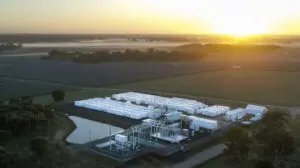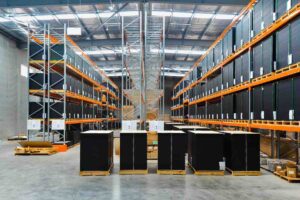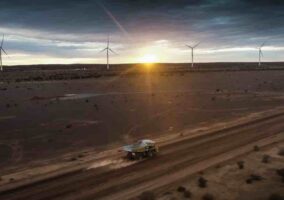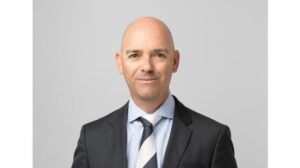A Sydney-based aerospace company founded by a husband and wife designer team has received $5.43 million to develop a world-first hydrogen vertical take off and landing aircraft that could be used in regional Australia for emergency services, freight and transport.
The Bankstown-based AMSL Aero was founded in 2017 by aeronautical engineer Andrew Moore and Siobhan Lyndon and has the backing of some major financiers, including IP Group Australia, Telstra Super, Host Plus and the St Baker Energy Innovation Fund.
It has already developed a battery electric e-VTOL aircraft called Vertiia, but Moore says this is limited in range to “urban mobility”, and hydrogen fuel cell technology is needed to cover the vast distances of regional Australia.
“If you want to fly for 20 minutes, then battery electric craft are probably ok,” Moore tells RenewEconomy. “But if you want to have people on board, you have to have an energy reserve, and that makes it really hard. Batteries don’t have the energy density.”
Moore says hydrogen and fuel cell technologies will boost the range of the Vertiia electric aircraft from around 250 kms to 1,000 kms, and make it suitable for air ambulance and other emergency services. It will be able to carry five people.
He says battery electric VTOL aircraft will be useful for “urban mobility”, ferrying people or goods for tens of kilometres – once the technology gets approval to operate in these environments.
Hydrogen aircraft, Moore says, will be able to serve both urban and regional areas. And he imagines a day – not so far away – where they become a central part of transport to the regions. “You won’t spend an hour in the taxi getting to the airport, and then waiting there for another hour. You will just hop in the aircraft in town and go.”
Moore says there are other advantages of a hydrogen aircraft – faster recharging and so less downtime, and despite the lower fuel efficiency it will be cheaper to run, mainly because the way batteries are used in electric aircraft reduces their life time.
“An aircraft on the ground is not making money,” Moore says. “Hydrogen aircraft can be operational almost twice the time, you don’t need to change the fuel cell as often and that delivers a lower operating cost than battery aircraft.”
Moore says the ARENA funds will help AMSL accelerate the development of the hydrogen VTOL, particularly the design of the hybrid systems and the integration. He expects trial flights could take place as early as 2025, with commercial market entry in 2026.
The Vertiia aircraft features eight electric motors and tilting wings, and will cruise at around 300km/h, with range of 250km on battery and 1,000km on hydrogen power.
That will make it capable of connecting Australian regional hubs such as Armidale to Coffs Harbour or Dubbo to Sydney, and will cost up to 70 per cent less to run than a conventional helicopter – and be a lot quieter at just 65-70 decibels.
Energy minister Chris Bowen said hydrogen will have a big role to play in Australia’s transport future.
“AMSL’s aircraft could become an important tool for emergency services personnel, particularly as we face more frequent natural disasters,” he said in a statement.
“Green hydrogen and other sustainable aviation fuels are vital to help decarbonise the hard-to-abate aviation sector, now accounting for around 2.5% of global emissions.”
ARENA CEO Darren Miller said AMSL Aero is a prime example of a “homegrown” Australian startup tackling one of the many challenges in the transition to net zero.
“Developing low emissions air transport will require a variety of solutions, including hydrogen and battery electric. AMSL’s work on the Vertiia is truly pioneering in this space. For end users like emergency services, this technology is an exciting prospect for cutting emissions from air transport.”










